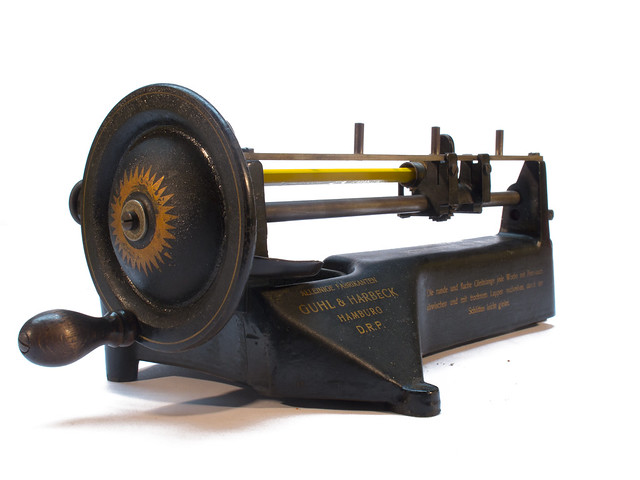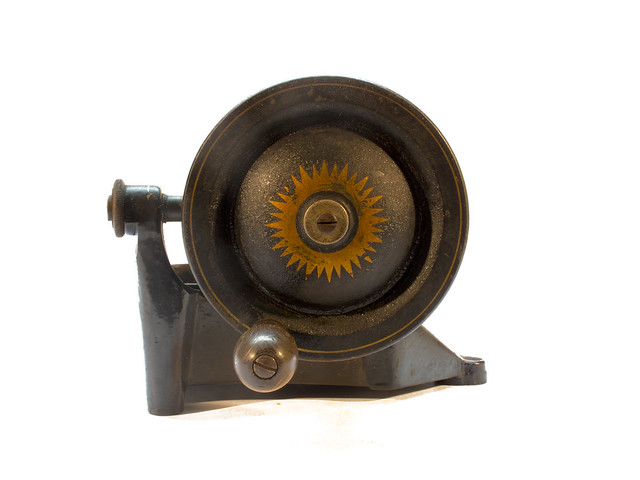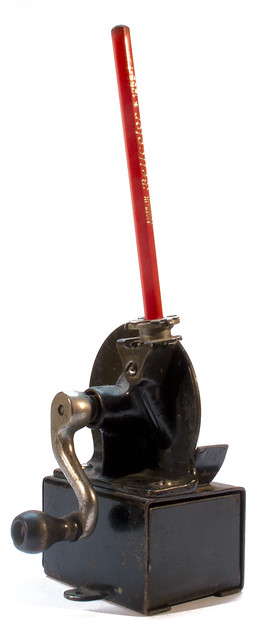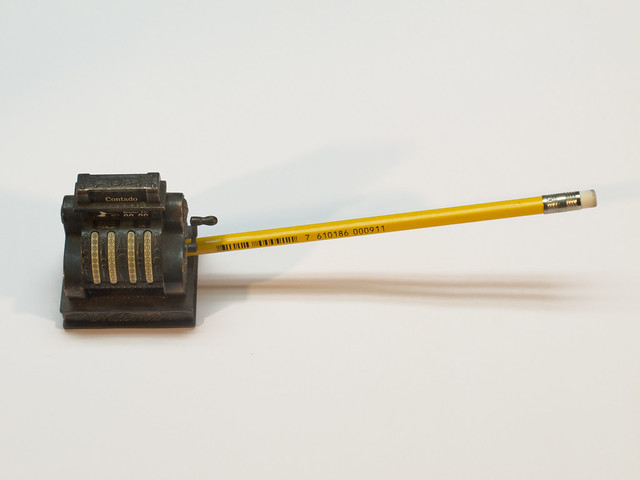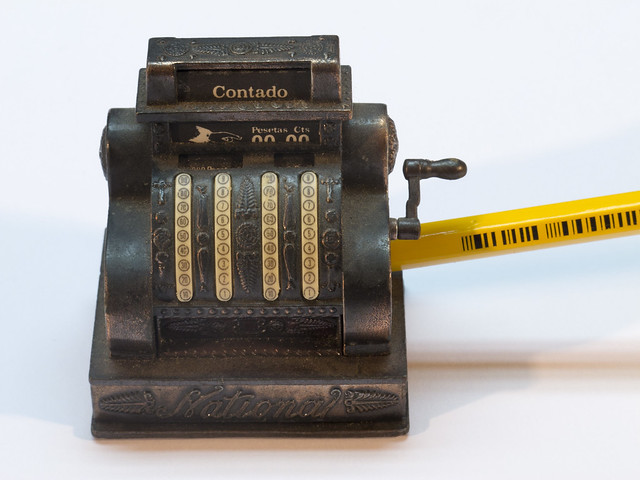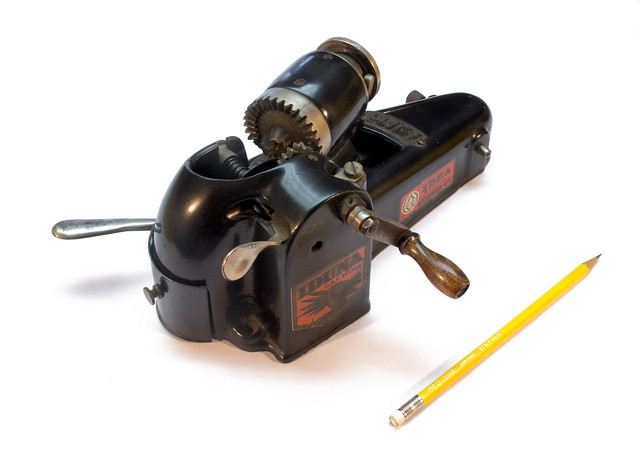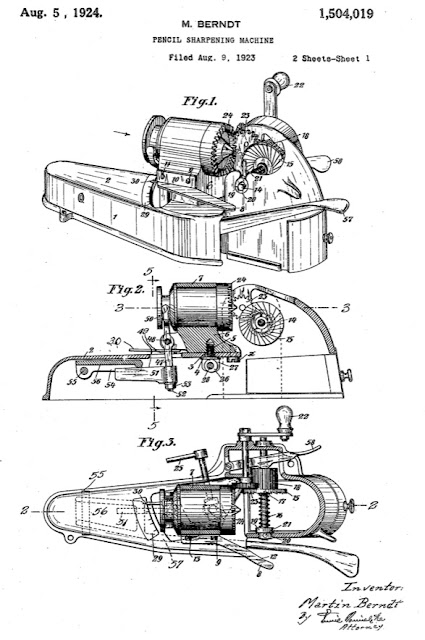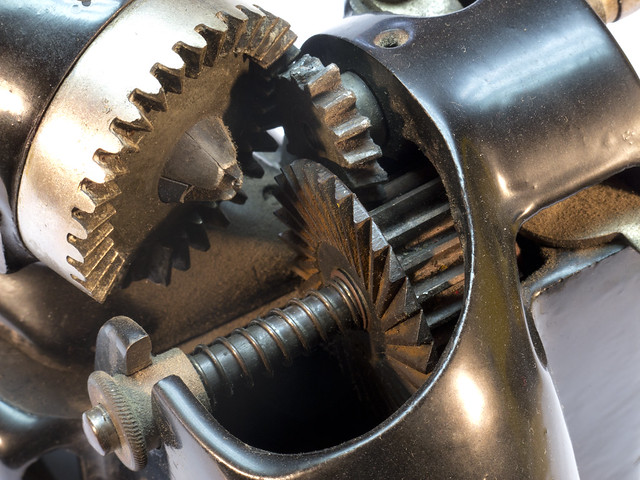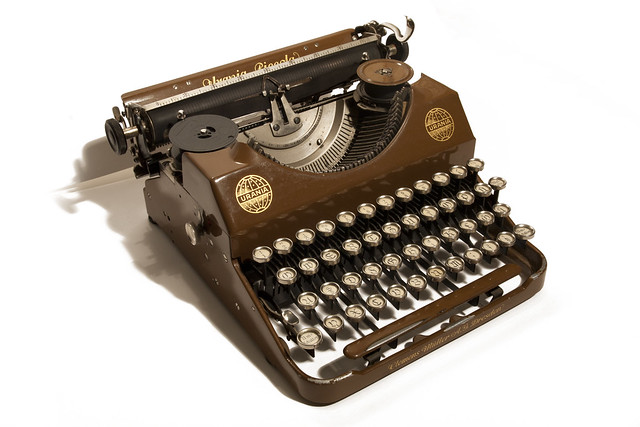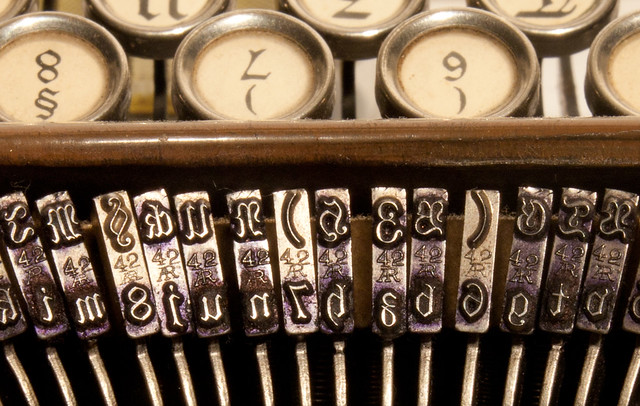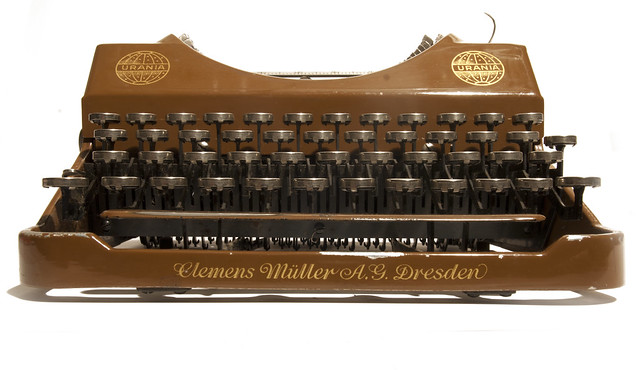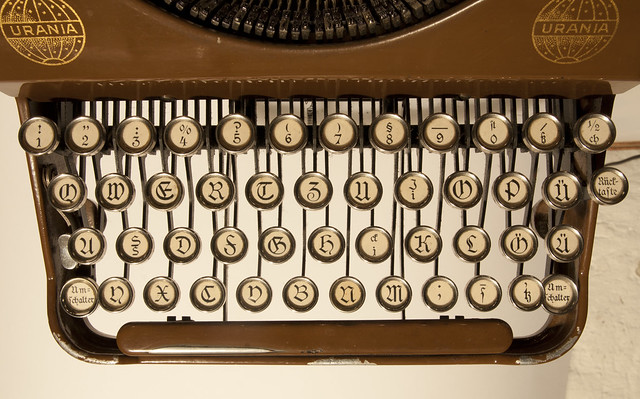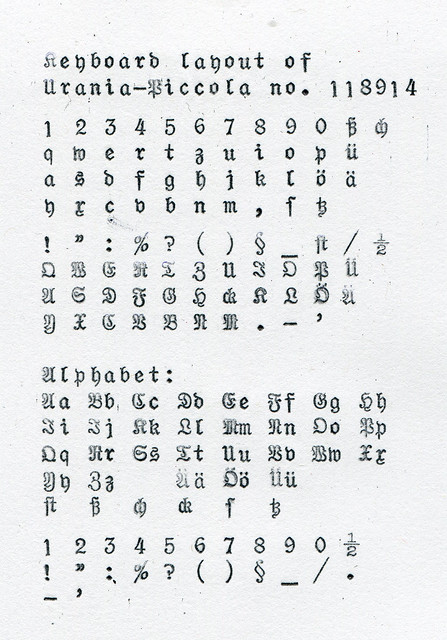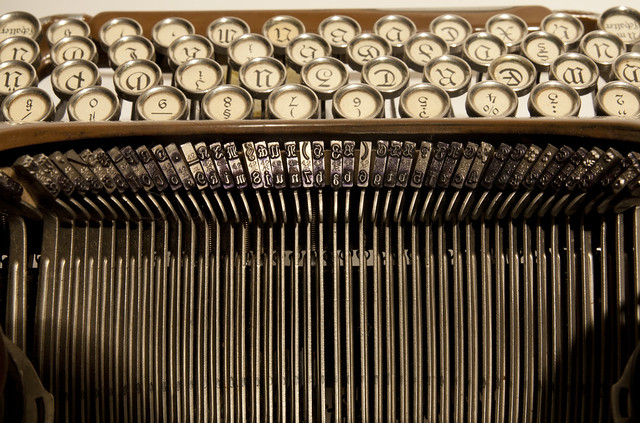Now here is something unusual, and as a historian I hope I don't fall into utter speculation with the following story. Maybe it is too good to be true, but who knows?
It started with this wooden box I received in the mail (admittedly, I knew there was a typewriter inside, but still there is always a certain thrill about opening the case, especially around Christmas).

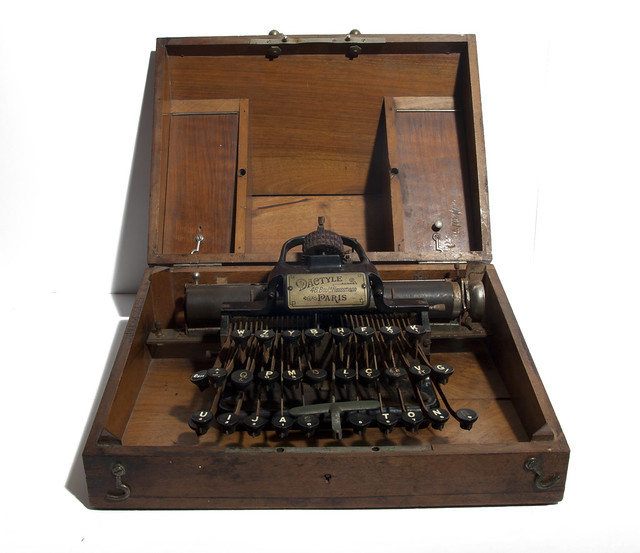
Dactyle, from France - very nice!!!
Manufactured in its first year of production, which was around 1895 (serial number 49!!).
But what about the inscription found on the left side of the case?
I read "Gl * P * PETAIN"
Now please help me to think this a bit further. Henri Philippe Benoni Omer Joseph Pétain (1856 - 1951), called Philippe Pétain, was a French military. Not any French military. Seen as hero because of his deeds in World War I, he entered politics around 1930 and became the head of Vichy France in World War II. He was already 84 years old when he assumed power in 1940. Too bad, because in the following years he awfully spoiled his reputation by collaborating thoroughly with the Germans, which cost thousands of people's lives.
 |
| source: wikimedia commons, Bundesarchiv Bild 183-H25217 |
After the war, he was tried for treason, sentenced to death - later on commuted to life sentence - and spent his last years in exile on a small island.
Now, why would this charming machine have belonged to Maréchal Philippe Pétain?
Here is my proposal:
In order to find out whether this typewriter could have belonged to "the" Pétain, we have to take the following elements into consideration and under scrutiny: the name inscription, and time and circumstances of use. From the previous owner I could by the way get no information other than he himself had found this typewriter on a Swiss market. So let's see:
The inscription is "Gl * P * PETAIN". "P" and "Pétain" would obviously fit, knowing that he was addressed as "Philippe", rather than with his real first name "Henri".
This is my "G" with superscript "l". Your opinion, please. I tried to find out whether there was a fixed code of abbreviations of military ranks for the French army in the early 20th century. It appears that at the time, there were no uniform rules on the topic. So "Gl" might well mean "Général".
Now, obviously, by World War II this typewriter would have been hopelessly outdated, but my assumption is that during World War I, Dactyle typewriters also of the first generation - as is the specimen in question - were still in use. Those were very functional and light portable machines and certainly came in handy in the field. I could not find many reports about Blicks in the field, but it is well known from Corona 3s that they were widely used in the armies. So, I would contend that this model could have been in use by French military in World War I.

But would the rank and the time coincide? Pétain is better known as Marshal of France, but this was a later title. On the eve of World War I, surprisingly enough, and Pétain being already in his late fifies, he still had not been promoted general. He had fallen out with his superiors on a question of military tactics, which explains. So he was close of taking his pension, when in 1914 the war broke out. He distinguished himself in a first battle, and was promoted General on 31st August 1914.
So, we have a name tag on the typewriter's case which would fit the General, also a fitting time-frame and circumstances likely to support the hypothesis that this machine was indeed General Pétain's. Now, your opinions please!
Read more on the Dactyle and its fascinating promotor Octave Rochefort on
typewriters.ch.
P.S.: You might wonder about the hand with the star of David - this emblem is to be found on every Dactyle typewriter, it was put there by the manufacturer. Reason still unknown. The hand is a so-called "Hamsa", supposedly with apotropaic effect, and popular in both Islam and Judaism. Here it is combined with the Magen David, or Star of David.

